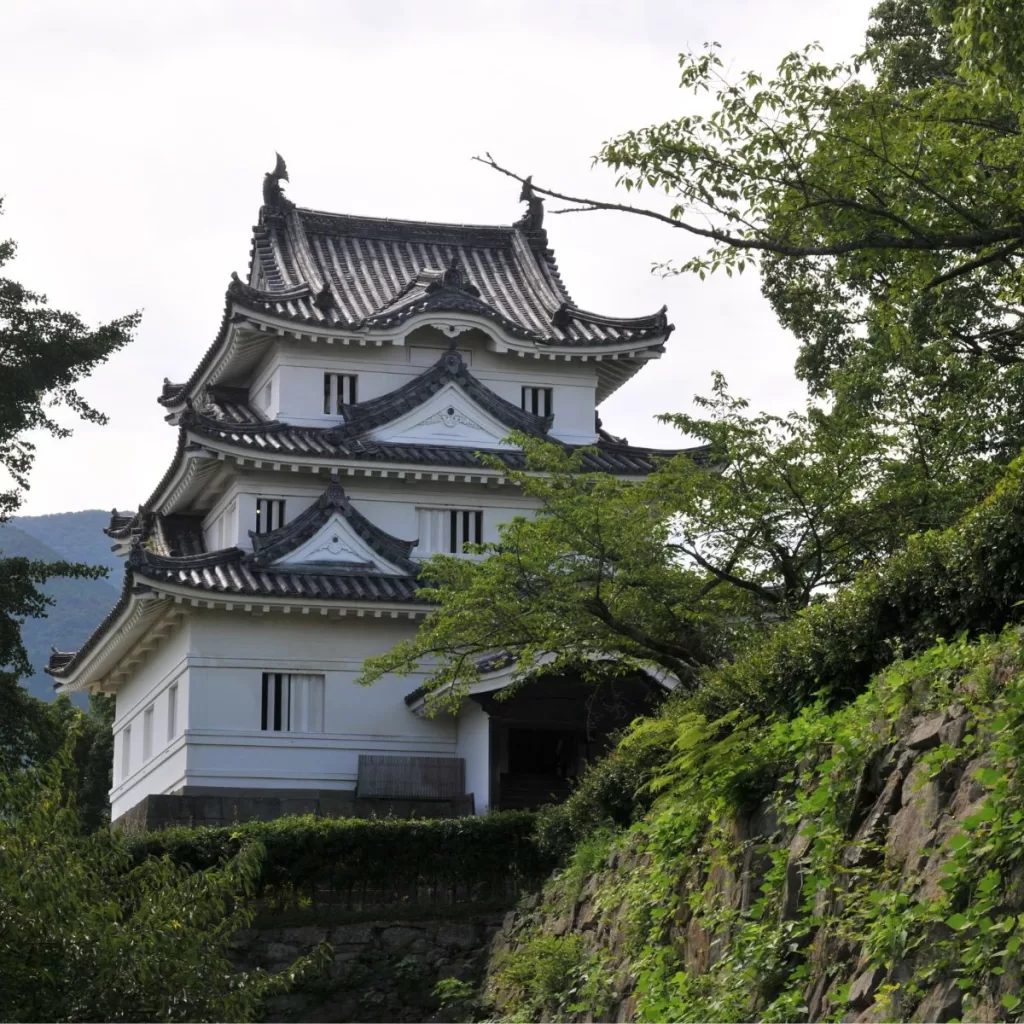Uwajima Castle: A Historically Significant Japanese Castle
Uwajima Castle is a hilltop hirayama-jiro style Japanese castle located in Uwajima city in Ehime Prefecture on the island of Shikoku. With a history spanning over 1000 years, the castle has played an important role in the region and stands today as one of only twelve castles in Japan to still have an original tenshu (castle tower).
Uwajima Castle Early History
The Uwajima area has strategic importance due to its coastal location on the Seto Inland Sea. During the Heian Period (794-1185), it was the center of piracy and rebellion in the region. In 941, the guard envoy Tachibana Tachibana set up a fortification called Itashima Marugushi Castle to suppress a rebellion led by Fujiwara no Sumitomo. Over the next several centuries, clans fought for control over the area. The Saionji clan governed the area for the Ashikaga shogunate in the Muromachi period (1336–1573) but were invaded by more powerful clans. After the Saionji were defeated by Chosokabe Motochika, Toyotomi Hideyoshi took control of the province and assigned it to his general, Kobayakawa Takakage.
Early Castle Construction
Kobayakawa Takakage appointed his adopted son Hidekane to oversee the Uwajima area. Minor fortifications existed, but Takakage’s replacement, Toda Katsutaka, expanded on these to create a Sengoku-era (1467-1603) castle. Katsutaka ruled harshly, eventually dying during an invasion of Korea. Hideyoshi then assigned the noted castle designer Tōdō Takatora to Uwajima.
From 1601 to 1604, Takatora entirely rebuilt the castle, referencing the original layout but expanding it into a formidable fortress with stone walls, fortified gates, and water moats. The innovative pentagonal layout of the moats and walls made the castle difficult to siege. He also moved the tenshu from Kagomori Castle to become Uwajima’s Tsukimi Yagura tower.
Uwajima Under the Tokugawa Shogunate
After the pivotal Battle of Sekigahara in 1600, Tokugawa Ieyasu emerged as the ruler of unified Japan, establishing the Edo period (1603-1867). He assigned Uwajima Domain to Date Hidemune, eldest son of the famous daimyo Date Masamune. Around 1617, the castle was renamed Uwajima. In 1649, it was severely damaged by an earthquake but rebuilt. From 1650-1671, major repairs and expansions were made, including the 1666 rebuild of the current tenshu by Date Munetoshi. Further damage from the Ansei great earthquakes (1854-1855) prompted more restorations until 1860. The Date clan ruled Uwajima until the Meiji Restoration ended the shogunate.

Preservation Efforts
The Meiji government initially ordered many castles destroyed, but Uwajima was spared. From 1900-1913, stone walls and gates were removed for harbor expansion, but the tenshu and main Otemon gate survived. In 1934, these were designated National Treasures until the 1950 passage of the Cultural Properties Protection Law, when the tenshu became a National Important Cultural Property. Sadly, the Otemon was destroyed in WWII air raids, but in 1949, the Date family donated the remaining structures to Uwajima City.
Further restoration efforts took place in the 1950s and 60s. Surviving gates like the Nagaya Gate were given protected status, and stone wall repairs commenced in 1994. In 2006, the castle was named one of Japan’s Top 100 Castles. Today, Uwajima Castle remains an original hilltop castle that retains its small but picturesque tenshu and is a historically significant remnant of Japan’s feudal era.
Design and Layout
Uwajima Castle sits atop a hill overlooking the city, surrounded on three sides by water moats. The central inner bailey measured 30 by 100 meters and contained the tenshu. Stone walls and moats protected the inner bailey and two outer enclosures. The innovative pentagonal layout enhanced defense capabilities.
The current three-story tenshu was rebuilt in 1666 and retains many authentic interior elements. Its position on the summit delivers excellent views of the city below. The structure incorporates gabled irimoya style rooftiles and intricate wood carving details.
Visiting the Castle
The castle is nestled within Uwajima city, a 20-minute walk from JR Uwajima Station. Visitors can hike two routes to the top; both offer stone steps winding through forested slopes. The northern course passes Yamazato Soko, a storehouse now containing a museum. After a 10-15 minute climb, the main keep comes into view.
The castle interior contains feudal armor and swords plus replicas demonstrating castle life. Climbing to the top floor is rewarded with panoramic vistas of the city. The castle is picturesque throughout the year, with cherry blossoms in spring and autumn colors in fall.
Cultural Significance
Uwajima Castle holds invaluable historical and cultural significance. Along with its structural importance as an original Japanese castle, it represents a nexus of power struggles in Japan’s medieval era. The innovative fortress design enabled its rulers to maintain authority despite the turbulent shifts happening around them.
Today the castle retains the atmosphere of the feudal era and provides insight into medieval Japanese defensive architecture and governance. Its preserved tenshu is an architectural treasure, allowing visitors to experience traditional construction techniques and styling. As one of only twelve remaining original castles, Uwajima Castle provides a unique window into Japan’s past.
The castle has witnessed centuries of local history from the Heian period to modern times. It remains an iconic symbol of Uwajima and Ehime Prefecture. Both historically and culturally, Uwajima Castle is one of Japan’s most significant castles.
Another must-see castle from Japan’s feudal history is the Takeda Castle Ruins, whose atmospheric mountaintop setting and remnants of walls and buildings echo the same samurai legacy found in the superbly restored grounds and structures of Uwajima Castle.